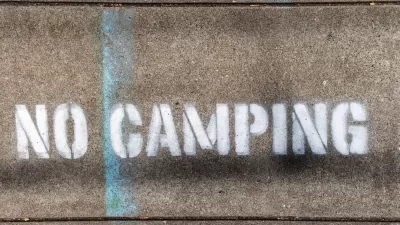The annual ‘point in time’ count fails to capture the diverse types of situations experienced by unhoused people in rural communities.

A study from the Rural Opioid Initiative at Georgia State University found that rural homelessness in the United States could be dramatically underestimated. According to a report by Liz Carey in The Daily Yonder, a survey conducted by the researchers reveals a gap between their findings and federal Point in Time count data.
This is partly because being houseless in rural areas looks different than in urban areas, says researcher April Ballard. “Rural people without housing may live in different situations — with relatives, or in tents, or in cars, Ballard said — instead of living in shelters or on the street. That makes finding and identifying them difficult at best.” A survey in Kentucky estimated the number of unhoused people at five times the number collected in the national annual survey. “In three counties, the research found, the “point in time” counts estimated there were no people who were homeless, while Ballard and her group found more than 100 people in those same counties who said they had used drugs and experienced homelessness in the previous six months.”
The data disparity matters, since the count becomes tied to resource allocation. “From a policy standpoint, it’s incredibly important for us to be capturing accurate information and accurate estimates, so that we’re actually dedicating the right amount of resources to communities,” Ballard points out.
FULL STORY: Study: Rural Homelessness Is Underestimated and Exacerbated by Opioid Epidemic

Alabama: Trump Terminates Settlements for Black Communities Harmed By Raw Sewage
Trump deemed the landmark civil rights agreement “illegal DEI and environmental justice policy.”

Study: Maui’s Plan to Convert Vacation Rentals to Long-Term Housing Could Cause Nearly $1 Billion Economic Loss
The plan would reduce visitor accommodation by 25% resulting in 1,900 jobs lost.

Planetizen Federal Action Tracker
A weekly monitor of how Trump’s orders and actions are impacting planners and planning in America.

Waymo Gets Permission to Map SF’s Market Street
If allowed to operate on the traffic-restricted street, Waymo’s autonomous taxis would have a leg up over ride-hailing competitors — and counter the city’s efforts to grow bike and pedestrian on the thoroughfare.

Parklet Symposium Highlights the Success of Shared Spaces
Parklets got a boost during the Covid-19 pandemic, when the concept was translated to outdoor dining programs that offered restaurants a lifeline during the shutdown.

Federal Homelessness Agency Places Entire Staff on Leave
The U.S. Interagency Council on Homelessness is the only federal agency dedicated to preventing and ending homelessness.
Urban Design for Planners 1: Software Tools
This six-course series explores essential urban design concepts using open source software and equips planners with the tools they need to participate fully in the urban design process.
Planning for Universal Design
Learn the tools for implementing Universal Design in planning regulations.
Caltrans
Smith Gee Studio
Institute for Housing and Urban Development Studies (IHS)
City of Grandview
Harvard GSD Executive Education
Toledo-Lucas County Plan Commissions
Salt Lake City
NYU Wagner Graduate School of Public Service





























